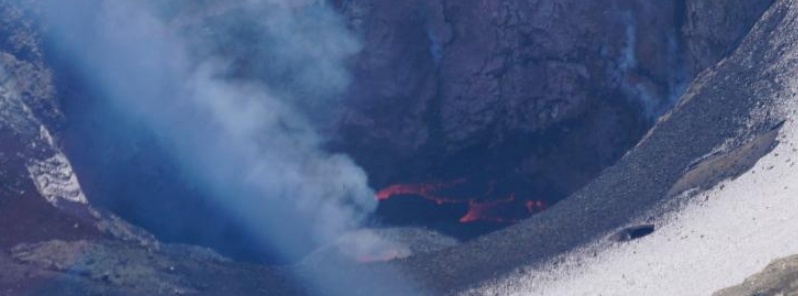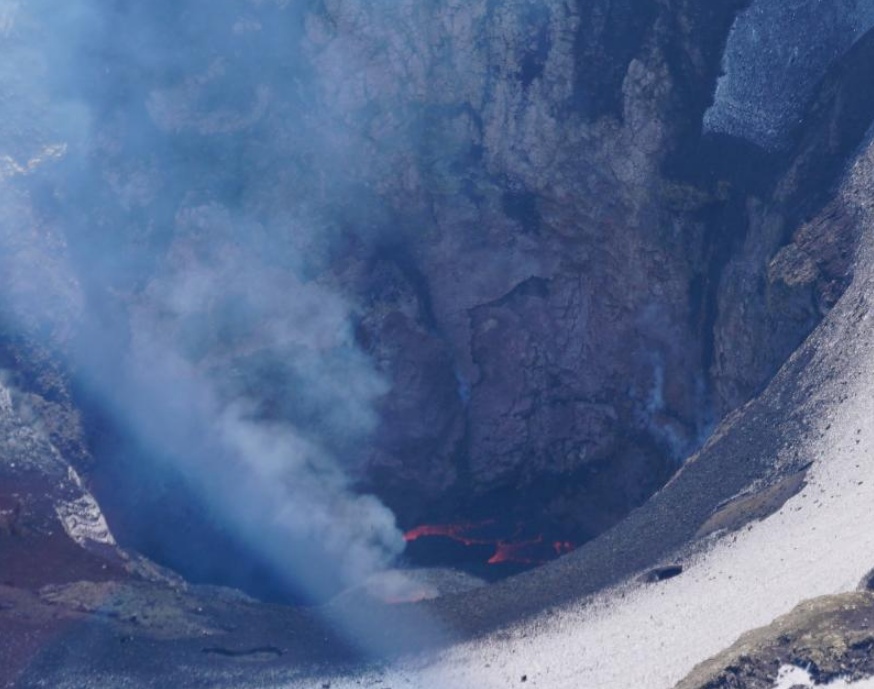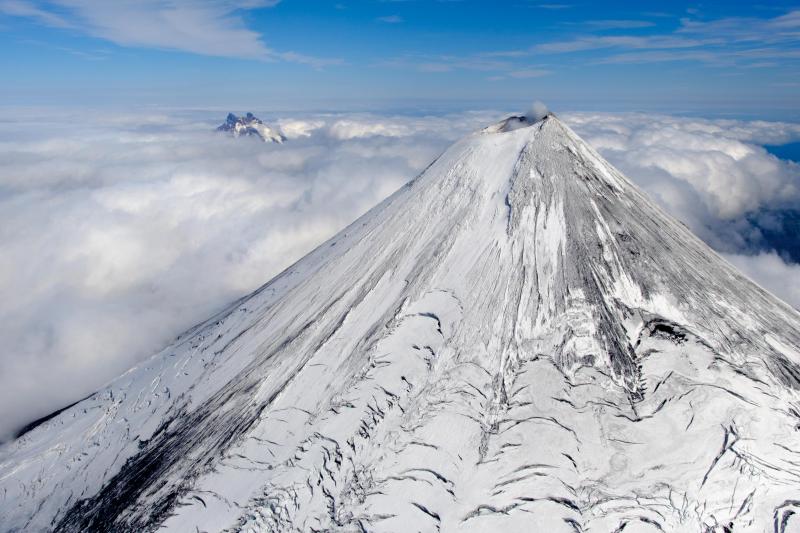Active lava lake at Shishaldin volcano, Aviation Color Code Orange, Alaska

The Alaska Volcano Observatory (AVO) has raised the Aviation Color Code from Yellow to Orange and the Alert Level from Advisory to Watch at Shishaldin volcano on July 24, 2019. The last eruption of this volcano took place in 2015 (VEI 1).
Field crews reported an active lava lake and minor spattering within the summit crater during a helicopter overflight. Elevated seismic activity continues similar to the past few weeks along with consistent elevated surface temperatures in satellite images.
No lava or ash has erupted outside the summit crater at this time.
The volcano has a history of VEI 1 to 3 eruptions since 1824.

Lava lake within Shishaldin's crater. Photo taken July 23, 2019, by David Fee, UAFGI/AVO.
AVO raised the Aviation Color Code to Yellow and the Alert Level to Advisory on July 12, 2019, due increased seismicity accompanied by elevated surface temperatures at the summit.

Shishalding on August 15, 2018. Image credit: Matt Loewen, USGS/AVO
Geological summary
The beautifully symmetrical volcano of Shishaldin is the highest and one of the most active volcanoes of the Aleutian Islands. The 2857-m-high (9 379 feet), glacier-covered volcano is the westernmost of three large stratovolcanoes along an E-W line in the eastern half of Unimak Island.
The Aleuts named the volcano Sisquk, meaning "mountain which points the way when I am lost." A steady steam plume rises from its small summit crater. Constructed atop an older glacially dissected volcano, it is Holocene in age and largely basaltic in composition.
Remnants of an older ancestral volcano are exposed on the west and NE sides at 1 500 -1 800 m (4 920 – 5 900 feet) elevation. There are over two dozen pyroclastic cones on its NW flank, which is blanketed by massive aa lava flows.
Frequent explosive activity, primarily consisting of strombolian ash eruptions from the small summit crater, but sometimes producing lava flows, has been recorded since the 18th century. (GVP)
Featured image: Lava lake within Shishaldin's crater. Photo taken July 23, 2019, by David Fee, UAFGI/AVO.

Commenting rules and guidelines
We value the thoughts and opinions of our readers and welcome healthy discussions on our website. In order to maintain a respectful and positive community, we ask that all commenters follow these rules:
We reserve the right to remove any comments that violate these rules. By commenting on our website, you agree to abide by these guidelines. Thank you for helping to create a positive and welcoming environment for all.